Sheffield / T&T Clark Bible Guides Collection (44 vols.)
Digital Logos Edition
Overview
This much sought-after and highly esteemed Bible study guide series is concise, comprehensive, manageable and affordable. The Sheffield / T&T Clark Bible Guides Collection (44 vols.) serves as an invaluable resource for students, preachers and Bible study leaders. Each of these books delivers to the reader a thorough and insightful introduction to a particular book of the Bible or the Apocrypha. All the books in the series were written by leading biblical scholars and the authors have drawn on their scholarly expertise as well as their experience as teachers of university and college students.
This title is included in the following collections
You can save when you purchase this product as part of a collection.
T&T Clark Bible Guides Series ...
$918.41$440.39Logos 8 Diamond Legacy Library
$2,999.99$2,999.99Logos 8 Pentecostal & Charisma...
$2,999.99$2,999.99Logos 6 Reformed Diamond Legac...
$2,999.99$2,999.99
- $2,999.99
- $2,999.99
- $2,999.99
- $2,999.99
- $4,749.99
- $4,749.99
- $4,749.99
- $4,749.99
- $4,749.99
- $4,749.99
- $4,749.99
- $4,749.99
- $4,749.99
- $4,749.99
- $4,749.99
- $4,749.99
- $11,399.99
- $11,399.99
- $11,399.99
- $21,749.99
- $24,999.99

- An introduction to the contents of the biblical book
- A balanced survey of the important critical issues
- Attention to literary, historical, sociological and theological perspectives
- An assessment of recent scholarship
- References to other standard works in annotated bibliographies
- Title: Sheffield / T&T Clark Bible Guides Collection
- Publisher: Sheffield / T&T Clark
- Volumes: 44
- Pages: 4,809
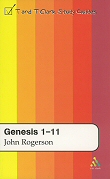
Genesis 1–11
- Editor: John W. Rogerson
- Publisher: T&T Clark
- Publication Date: 1999
- Pages: 84
This guide is divided presented into three chapters, with chapters two and three being the main sections. Chapter One puts Genesis 1–11 into context. Chapter Two is concerned primarily with the hermeneutical debate currently centered on Genesis 1–11. Chapter Three is a treatment of the text of Genesis 1–11 using the historical-critical method.
John W. Rogerson is Professor Emeritus of Biblical Studies, University of Sheffield, Sheffield, UK. He was awarded the degree of DD by Manchester for his published work and holds three honorary doctorates: from the University of Aberdeen (1998), Friedrich-Schiller-Universität Jena (2005) and Albert-Ludwigs-Universität Freiburg (2006).Dr. Rogerson is the author of Anthropology and the Old Testament and Bible in Ethics.

Genesis 12–50
- Editor: R. W. L. Moberly
- Publisher: Sheffield Academic Press
- Publication Date: 1995
- Pages: 106
Moberly explains how to read the text of Genesis 12–50, introduces the patriarchal stories featured therein and then gives an in-depth interpretation of one of these, the story of Abraham in Genesis 22. The author then gives an exposition of the place, setting, context and characters of these patriarchal scriptures. Moberly finishes this insightful text by probing the discussions which are significant in the history of these biblical writings, and issuing an invitation to readers of the Old Testament. He suggests using ones imagination to embrace the OT scriptures not only as history, but also as literature.
R. W. L. Moberly is lecturer in theology at the University of Durham. He is the author of At the Mountain of God, The Old Testament of the Old Testament, and From Eden to Golgotha: Essays in Biblical Theology.

Exodus
- Editor: William Johnstone
- Publisher: Sheffield Academic Press
- Publication Date: 1999
- Pages: 118
Johnstone asks, “What kind of book is Exodus?” He describes it not only as a history book couched in a narrative, but also as a book dominated by stipulations for religious services, legal practices, and cultic institutions. As such, the author also states the book is also part calendar and liturgical handbook and part code of law. Johnstone thus divides the book into sections on historical matters, institutional matters, literary matters, and theological matters
William Johnstone is professor of Hebrew and Semitic languages, and head of the department of divinity with religious studies, University of Aberdeen, Aberdeen, Scotland.

Leviticus
- Editor: Lester L. Grabbe
- Publisher: Sheffield Academic Press
- Publication Date: 1997
- Pages: 113
Although Leviticus may seem a less-than-appealing text to the modern theology student, considering the topics include such unsavory subjects as ritual sacrifice, Grabbe stresses that Jewish and Christian commentators through the centuries have found it to be an important source of religious symbolism and theological reflection. By taking a closer look at the text, the author reveals many fascinating insights into society, history, religion, and theology.
Lester Grabbe (PhD, Claremont) is professor of Hebrew Bible and early Judaism at the University of Hull, UK. He is the author of Wisdom of Solomon in this series, Good Kings and Bad Kings and A History of the Jews and Judaism in the Second Temple Period, Vol. 1 (included in the Second Temple Period Collection) and Can a “History of Israel” be Written? (included in the Studies in Old Testament Themes).
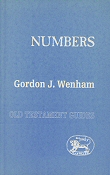
Numbers
- Editor: Gordon J. Wenham
- Publisher: Sheffield Academic Press
- Publication Date: 1997
- Pages: 123
Wenham states that the purpose of this guide is to introduce modern readers to a book that, at first glance, appears droll and unexciting, but upon further reading and reflection, contains some of the most gripping stories in Scripture. The book of Numbers is comprised of stories containing humor, magic, prophecy, drama, solemn ritual and practical laws, yet many miss these interesting tales by failing to press through the droll beginning. The author examines this vital volume in six chapters entitled “The Arrangement of Numbers,” “The Genres of Numbers,” “The Sources of Numbers,” “Numbers and History,” “The Theology of Numbers,” and “Later Interpretation of Numbers.”
Gordon J. Wenham (PhD, Cambridge) was professor of Old Testament studies at the University of Gloucestershire. He is the author or editor of ten books, including major commentaries on Leviticus and Genesis, Story as Torah: Reading Old Testament Narrative Ethically (included in the Testament Studies Series Collection), and coeditor of the Apollos Old Testament Commentary series.
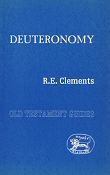
Deuteronomy
- Editor: Ronald E. Clements
- Publisher: Sheffield Academic Press
- Publication Date: 1997
- Pages: 101
Clements presents this book as a central law-book (Chapters 12–26) surrounded by a framework (Chapters 1–11 and 27–34). The framework consists of a historical introduction in Chapters 1–3, a series of speeches and exhortation and admonition in Chapters 4–11, and a historical epilogue in Chapters 27–34. The central law-book of Chapters 12–26, says Clements, appears as a recognizable whole, a series of laws, many of which elaborate on earlier laws preserved in the book of Exodus. The author also investigates the central theological themes, authorship, historical background and the social development of Israel and its connections to the book of Deuteronomy.
Ronald E. Clements was formerly Samuel Davidson Professor of Old Testament at King’s College at the University of London. He earned his degrees at Spurgeon’s College in London; Christ’s College, Cambridge; and the University of Sheffield, UK, where he received his PhD in 1961. After lecturing seven years at the University of Edinburgh, he spent 1967–83 as a lecturer at Cambridge University. An ordained Baptist minister in England since 1956, he has written more than a dozen significant books on the Old Testament. He also contributed to the esteemed Hermeneia commentary set.
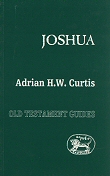
Joshua
- Editor: Adrian H. W. Curtis
- Publisher: Sheffield Academic Press
- Publication Date: 1998
- Pages: 87
The book of Joshua bridges the gap between the Pentateuch and the story of Israel in the Promised Land. It recounts the familiar traditions of the conquest of Canaan, and details the portions of territory allotted to the tribes. Does the book of Joshua relate to neighboring books in the canon? To what extent does it contain theology—such as the preceding books—and to what extent does Joshua contain history and geography—such as the books that follow? How should it be understood in the light of archaeological discoveries, or recent studies of the emergence of Israel? How might it read as piece of literature? This study guide offers an introduction to the contents of the Joshua and a survey of the scholarly views about its nature and purpose. Curtis states that the key to understanding Joshua should be sought not so much in the field of history as of theology.
Adrian Curtis is senior lecturer in Old Testament studies and head of the department of religions and theology at the University of Manchester. His many previous publications include the Oxford Bible Atlas, Psalms in the Epworth Commentaries and Ugarit (Ras Shamra).
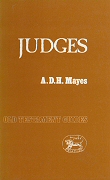
Judges
- Editor: Andrew D. H. Mayes
- Publisher: Sheffield Academic Press
- Publication Date: 1989
- Pages: 96
Mayes presents this guide in three parts; "Chapter 1: The Book of Judges,” "Chapter 2: The Social Context of Events Related in Judges,” and "Chapter 3: Israel in the Period of the Judges." The first chapter covers the deuteronimistic context, the structure, and the history of the origin of the book of Judges. The second chapter discusses the geo-historic setting, the social forms and the society of ancient Israel in the pre-monarchic era. The third chapter defines various aspects of the period of the Judges; the beginning and end-points of the era, Israel as a segmented society, pre-monarchic leadership and the place this period holds in the history of Israel.
Andrew Mayes is professor of Hebrew and head of the department of Hebrew, senior fellow of the University of Dublin and Fellow of Trinity College, and member and senior vice president of the Royal Irish Academy, Dublin, Ireland. His previous publications include: Israel in the Period of the Judges, The Story of Israel between Settlement and Exile, and The Old Testament in Sociological Perspective.
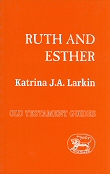
Ruth and Esther
- Editor: Katrina J. A. Larkin
- Publisher: Sheffield Academic Press
- Publication Date: 2000
- Pages: 103
In this guide, Katrina J. A. Larkin studies the only two biblical books to have been named after women and finds them refreshingly different. She surveys a rich field of new writing on Esther, and poses questions which are returning to the fore of Biblical studies: What makes a biblical text theologically valuable or dangerous, and how do our perceptions change? What is the relation between history and theology? What is the status of variant forms of the biblical tradition? How does the book achieve its literary impact? Larkin also tackles the elusive issues of the date of authorship, and the relationship between this book and Israelite law.
Katrina J. A. Larkin is a former lecturer in Old Testament in the department of theology and religious studies, King’s College, London, UK.
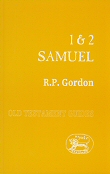
1 & 2 Samuel
- Editor: R. P. Gordon
- Publisher: Sheffield Academic Press
- Publication Date: 1998
- Pages: 100
Gordon clearly and engagingly unpacks the complex issues in 1 & 2 Samuel, such as the deuteronomistic history, the Shiloh tradition, the Ark narrative, the rise of the monarchy, the reign of Saul, the story of David, the Davidic covenant, the Succession narrative and the Samuel appendix. A first-rate guide for students, with annotated bibliographies and indexes.
R. P. Gordon is regius professor of Hebrew at the University of Cambridge, and previously taught at the University of Glasgow.
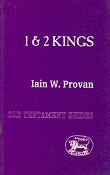
1 & 2 Kings
- Editor: Iain W. Provan
- Publisher: Sheffield Academic Press
- Publication Date: 1997
- Pages: 120
This work deals with 1 and 2 Kings as a unified whole, nestled within its canonical context. This canon presumes the reader has prior knowledge of the entire story of Israel and infers the prophetic and New Testament writings. It is examined here as narrative literature with historic and geographic intent, designed to teach its readers about God and the ways of God. The author does a masterfully draws the reader’s attention to recurring themes in Kings, such as God’s promise and its fulfillment. Provan has succeeded in making Kings a more accessible book.
Iain Provan is Marshall Sheppard professor of biblical studies (OT) at Regent College, BC, Canada. He received his BA from London Bible College in Theology, his MA at Glasgow University in mediaeval history and archeology, and his PhD from Cambridge. Provan has written numerous articles and several books, including commentaries on Lamentations, 1 and 2 Kings, Ecclesiastes and Song of Songs, and he coauthored A Biblical History of Israel with Phil Long and Tremper Longman.

1 & 2 Chronicles
- Editor: Gwilym H. Jones
- Publisher: Sheffield Academic Press
- Publication Date: 1999
- Pages: 133
Among early Christian and Jewish writers, the books of Chronicles were tacitly understood as authoritative historical works. But in the Septuagint and Vulgate, these works were named “things left out,” suggesting that 1 and 2 Chronicles had only supplementary status in the canon. Jones begins his commentary with an introduction, then tackles the genealogies (1 Chronicles 1–9), the united monarchy (1 Chronicles 10–2 Chronicles 9), and The divided monarchy (2 Chronicles 10–36). He then analyzes sources and method, authorship and date, purposes of writing, and theology of the books.
Gwilym H. Jones was professor and head of the School of Theology and Religious Studies at the University of Wales, Bangor. His previous publications include 1 and 2 Kings in The New Century Bible Commentary and The Nathan Narrative.
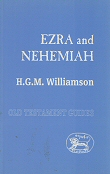
Ezra and Nehemiah
- Editor: Hugh G. M. Williamson
- Publisher: Sheffield Academic Press
- Publication Date: 1996
- Pages: 100
Based on years of rigorous research and study, this guide provides insightful guidance into the complexities of the books of Ezra and Nehemiah. The author gives special attention to the difficult scholarly challenges associated with their form, structure, and literary history.
Hugh Williamson is regius professor of Hebrew at the University of Oxford. His previous publications include commentaries on 1 and 2 Chronicles in the New Century Bible series, on Ezra and Nehemiah in the World Biblical Commentary series, as well as the monograph Israel in the Books of Chronicles.
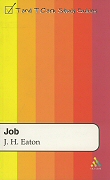
Job
- Editor: J. H. Eaton
- Publisher: T&T Clark
- Publication Date: 1992
- Pages: 70
Eaton’s thorough analysis of Job is broken up into three chapters:
- “Chapter 1, Experiencing the Book of Job: A Guided Reading,”
- “Chapter 2, Gathering our Observations: Structure and Theme,” and
- “Chapter 3, Questions of Context and Language.”
Chapter one is intended to accompany a reading of the Book of Job. Chapter two arranges and develops the observations made in chapter one. In chapter three the book of Job is examined in the context of other ancient literature that grapples with the question of the meaning of life.
John Eaton taught Old Testament at Birmingham University in England until his retirement. He is the author of many notable books on the Psalms and the Old Testament, including Vision in Worship, The Circle of Creation, and The Psalms: A Historical and Spiritual Commentary with an Introduction and Translation (included in Psalms: A Commentary, and Its New Testament Relevance).
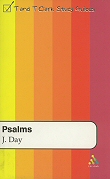
Psalms
- Editor: John Day
- Publisher: T&T Clark
- Publication Date: 1999
- Pages: 147
In this highly competent analysis of the Psalms, John Day begins by introducing the most common types of Psalms. He then examines Psalms of lament, praise and thanksgiving, confidence, wisdom and torah Psalms, historical Psalms, entrance Liturgies, pilgrimage Psalms, the Autumn Festival, and the Royal Psalms. Day then discusses the composition of the Psalter, and finishes up by scrutinizing the theology of the Psalms and the history of their interpretation by the Jews and in the Christian church.
John Day is fellow and tutor of Lady Margaret Hall and reader in biblical studies at the University of Oxford.
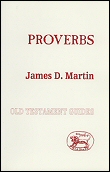
Proverbs
- Editor: James D. Martin
- Publisher: Sheffield Academic Press
- Publication Date: 2001
- Pages: 100
In this book James Martin introduces not only Proverbs, but also the genre of wisdom literature in general (dealing with such questions as the origin and location of “wisdom” in ancient Israel). He discusses the structure of the book of Proverbs as a whole, provides a guided reading to the sustained discourses in chapters 1–9 and to the collections of Proverb-type sentences in the remaining chapters, and considers the relationship of Proverbs to other ancient Near Eastern literature. This guide is completed with essays entitled “The Feminine in the Book of Proverbs” and “Wisdom and Theology.”
James Martin is a former senior lecturer in Hebrew and Old Testament at the University of St. Andrews.
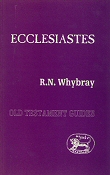
Ecclesiastes
- Editor: R.N. Whybray
- Publisher: Sheffield Academic Press
- Publication Date: 1997
- Pages: 85
Dr. Whybray describes the ancient Near-Eastern tradition of producing collections of wisdom: instructions in the form of aphorisms and proverbs for educating the young on how to have a happy and successful life. Although Proverbs depends on the tradition of wisdom literature, according to Whybray, the book of Ecclesiastes modifies this tradition. The book contains three very different types of material: sections whose form and character are hardly distinguishable from the instructions of Egypt and Mesopotamia; others where the aim remains the achievement of the successful life; and finally, passages in which the main purpose has now become the pursuit of a wisdom which is in entire conformation with the “fear of the Lord.”
R. Norman Whybray was emeritus professor of Hebrew and Old Testament Studies at the University of Hull. His other publications included The Second Isaiah in this series, and The Good Life in the Old Testament (included in Old Testament Studies Series Collection).

The Song of Songs
- Editor: Althayla Brenner
- Publisher: Sheffield Academic Press
- Publication Date: 1989
- Pages: 104
This volume about The Song of Songs was written by one of the foremost Hebrew experts on this subject, Althayla Brenner. She graciously and gratefully delivered this complete and insightful commentary and her expertise made for a unique treatment of this special canon. She presents her analysis in chapters entitled, “The Title and the Place of the Book in the Hebrew Canon,” “The Text: Matter and Form, Unity and Sequence, or an Anthology?,” and “Daily Life: Settings, Contexts, the Environment.” The author further explores the authorship of The Song of Songs, its intertextual connections within the biblical context, and ways in which it has become part of Jewish and Christian Liturgies as well as music and the visual arts.
Althayla Brenner is professor of Hebrew Bible and Old Testament in the biblical studies section of religious studies in the department of art, religion and culture (KRC), faculty of the humanities, University of Amsterdam. She previously taught biblical studies at Oranim College of Education / University of Haifa, Israel. Her many publications include Colour Terms in the Old Testament, The Israelite Woman and Feminist Companion to Esther, Judith and Susanna (included in Studies in Old Testament Themes) and contributed to Semeia: An Experimental Journal for Biblical Criticism.
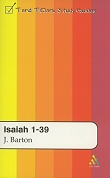
Isaiah 1–39
- Editor: John Barton
- Publisher: T&T Clark
- Publication Date: 1995
- Pages: 123
Isaiah is one of the most difficult and yet rewarding of the major prophets. Barton looks at First Isaiah (chapters 1–39) as a composite work by many authors, but also as a work to be read through in a linear fashion like a literary work. These chapters are a complex assembly built of distinctive component parts, and Barton focuses on the words of Isaiah, son of Amoz as the core of this and the other Isaiah works. This book consists of six chapters: “The Prophet and the Book,” “Isaiah and Politics,” “Isaiah and Social Morality,” “Isaiah and the Future,” “After Isaiah,” and “Reading Isaiah.” While there are various approaches to this biblical material, including holistic reading and historical criticism, all the methods of analysis outlined in this book are intellectually serious, committed to careful engagement with the text, and produce rich insights. The author entreats the reader to give all literary and interpretive methods a fair hearing.
John Barton is Oriel Professor of the Interpretation of Holy Scripture at the University of Oxford.
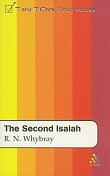
The Second Isaiah
- Editor: R.N. Whybray
- Publisher: T&T Clark
- Publication Date: 1995
- Pages: 85
While noting that the book of Second Isaiah, or Deutero-Isaiah, is free of many of the complications present in First Isaiah, Whybray suggests that the redactional history of Second Isaiah may be even more complex than any other prophetical book of the Old Testament. He considers these chapters to be some of the most important and influential chapters in the entire Bible. Isaiah 40–55 played a crucial role in the development of some of the great themes of Jewish and Christian theologies. In particular, Second Isaiah has had a profound effect on the doctrine of God because it portrays Yahweh as the unique and individual creator, as the Lord of history, as almighty and righteous, as loving and merciful, as holy, and as Savior and Redeemer. The role of Isaiah was not so much as innovator as of one who articulated with greater clarity than his predecessors the theological understanding of God and the world.
R. Norman Whybray was emeritus professor of Hebrew and Old Testament studies at the University of Hull. His other publications include Ecclesiastes in this series, and The Good Life in the Old Testament (included in Old Testament Studies Series Collection).

Isaiah 56–66
- Editor: Grace I. Emmerson
- Publisher: T&T Clark
- Publication Date: 1996
- Pages: 112
Grace Emmerson has described Trito-Isaiah, chapters 56–66, as “a bewildering medley of denunciation and promise, warning and hope, lament and confidence,” and she is not alone in regarding its eleven chapters as being a “miscellany of prophecies.” The importance of the message, the balance and artistry of the structure and the impressive quality of the poetic imagery are inversely proportional to the scant attention which these last chapters are often paid, in comparison to the rest of the book of Isaiah. Emmerson also stresses that the use of the expression “Third Isaiah” does not prejudge the question of single or multiple authorship, but is merely a convenient way of referring to chapters 56–66.
Grace I. Emmerson was honorary lecturer at the University of Birmingham.
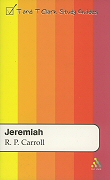
Jeremiah
- Editor: R.P. Carroll
- Publisher: T&T Clark
- Publication Date: 1997
- Pages: 120
According to R. P. Carroll, the book of Jeremiah is long, complex and difficult, and to the modern reader it appears to be a repetitive mess, mixing poetry and prose in no particular order. There appear to be traces of attempts to collate and give order to some parts of the material, but the cacophony of voices heard in the book make it difficult to accept the single attribution of the work to the man mentioned in the first verse of chapter one. The reader who is not confused by the book of Jeremiah has not understood it, Carroll states. He attempts to sort out this complicated biblical text by examining the contents and structure of the book, editions of Jeremiah, theories of the formation of the book, cycles of poetry and prose, the narratives, the figure of Jeremiah and the theo-politics of the book. He then wraps up with a chapter entitled “Senses of an Ending” in which he addresses the confusing multiple endings of Jeremiah and offers insights on each of these.
R. P. Carroll was professor and head of the department of biblical studies at the University of Glasgow.
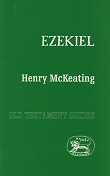
Ezekiel
- Editor: Henry McKeating
- Publisher: Sheffield Academic Press
- Publication Date: 1995
- Pages: 124
A much-neglected prophet, Ezekiel is nevertheless a key figure in Old Testament religion. Standing where he does, at the great crisis point of Israel’s history, the exile, he confronts the basic questions of whether the nation of Israel can survive, and whether it should. Ezekiel represents the priestly strand in Israel’s thinking, which lays such weight on the temple as the place of the presence of God. How can the nation be sustained when it has been deprived of its traditional place of worship? Ezekiel’s reply is that the presence of God is still available, even in the land of exile, but that the presence is yet to be restored to its proper place in Jerusalem. Like the other volumes in the series, this compact study of Ezekiel will be much appreciated by the student turning to the study of the prophet for the first time as well as the scholar seeking another view of an often-visited subject.
Henry McKeating was principal of Wesley College, Bristol.
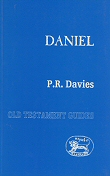
Daniel
- Editor: Philip R. Davies
- Publisher: Sheffield Academic Press
- Publication Date: 1998
- Pages: 131
Daniel has produced a good deal of controversial debate, especially regarding its date and authorship and its apocalyptic character. In this study guide, Philip R. Davies carefully notes and evaluates the scholarly issues pertinent to this debate. Emphasis is placed on the literary and theological aspects of the book, which have been comparatively neglected, but which reflect the concerns and interests of contemporary Old Testament scholarship. This volume thus looks both at the past scholarship and points towards future trends in the understanding of a unique literary and theological masterpiece.
Philip Davies is professor of biblical studies at the University of Sheffield.
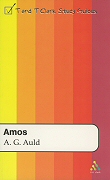
Amos
- Editor: A. G. Auld
- Publisher: T&T Clark
- Publication Date: 1995
- Pages: 91
The contents of this introduction do not mirror the progression of the themes of the book of Amos itself. The reader starts near the end with reports of Amos’s visions and the question of his status, and moves to Israel in the context of its neighbors. The reader is then invited to turn to more general discussion of literary issues in Amos. Only then is the familiar starting point of Amos’s social and religious critique handled, while a final chapter assesses the wider religious and theological significance of the book.
A. G. Auld is professor of Hebrew Bible at the University of Edinburgh.
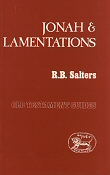
Jonah and Lamentations
- Editor: Robert B. Salters
- Publisher: Sheffield Academic Press
- Publication Date: 1994
- Pages: 122
The book of Jonah stands firmly in the Old Testament tradition, but the genre and aim of its author are not easy to discern. Salters stresses the authenticity of Jonah’s message to the Ninevites, along with their need for repentance, and Yahweh’s mercy. The purpose of the book must lie in a combination of these themes. Lamentations is a neglected book, perhaps because it has been associated with the book of Jeremiah and considered almost as an appendix. On the question of genre, it has the closest affinities with the Psalms of lament. However, whereas Psalms of lament are usually generic and tend to distance themselves from historical events, the five chapters of Lamentations have been written firmly within the context of the Fall of Jerusalem. While gloom abounds, the faith of the author of Lamentations shines through. He is a practical monotheist, says Salters, who interprets the catastrophe of the fall of Jerusalem in the light of his faith.
Robert B. Salters is senior lecturer in Hebrew and Old Testament at the University of St. Andrews.
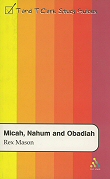
Micah, Nahum and Obadiah
- Editor: Rex Mason
- Publisher: T&T Clark
- Publication Date: 1991
- Pages: 110
Mason here provides a valuable basic orientation to the modern reading of these short and often difficult minor prophets. By carefully surveying and evaluating the historical-critical options that have been proposed during the last century, he outlines the message of these books within a post-exilic, canonical context. Although scholars hold diverging assumptions about the authorship of Micah, Mason asserts that the book must be read as a coherent whole. Mason views the work as a post-exilic tract which re-interprets the prophet’s message in the light of the situation after the exile. For Nahum and Obadiah, whose apparent theology of hate for foreigners has limited their interpretive appeal, the argument that the books were designed to function as part the Book of the Twelve—the singular book of prophets from Amos through Jonah referred to as the “Twelve Prophets” in the Wisdom of Ben Sirach—must be taken seriously.
Rex Mason is a retired lecturer and tutor in Old Testament and Hebrew at the University of Oxford. His other works include Zephaniah, Habakkuk, and Joel in this series.
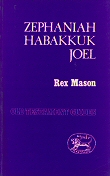
Zephaniah, Habakkuk and Joel
- Editor: Rex Mason
- Publisher: Sheffield Academic Press
- Publication Date: 1994
- Pages: 129
The author begins this guide with an introduction and explains that he presents these three prophetic books in what he believes to be their chronological sequence rather than canonical order. Part One examines the book of Zephaniah by describing the contents, portraying Zephaniah the person, explaining the historical background and criticisms, and illustrating the message of Zephaniah. Part 2 is devoted to the book of Habakkuk, listing the contents, explaining the history of criticism of the book, illuminating the details of the prophet and his times, and analyzing the theology and function of the book. Part 3 is a treatment of the book of Joel. Mason here presents the contents of the book of Joel, then discusses the various possible meanings of the plague of locusts which is such a prominent feature of Joel. He then looks at the questions of the unity and the dating of the book, and it's parallels with other Old Testament materials.
Rex Mason is a retired lecturer and tutor in Old Testament and Hebrew at the University of Oxford. His other works include Zephaniah, Habakkuk, and Joel in this series.
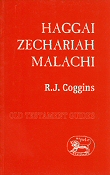
Haggai, Zechariah and Malachi
- Editor: Robert J. Coggins
- Publisher: Sheffield Academic Press
- Publication Date: 1996
- Pages: 87
Coggins first analyzes the historical setting of the books, including the concept of prophets under the oppression of foreign rulers. He describes the editorial framework and then analyzes the content of Haggai and Zechariah 1–8. The author discusses the problem of “theocracy” versus “eschatology” as it related to prophets of the postexilic times, then moves on to address Zechariah 9–14 and Malachi. The last chapter of this book puts the contents and ideals of these three biblical works into larger perspective, looking forward into the times of the New Testament writers.
Robert Coggins is a former senior lecturer in Old Testament at King’s College, London. His previous publications include Samaritans and Jews and commentaries on 1 & 2 Chronicles, Ezra and Nehemiah in the Cambridge Bible series and on Nahum and Obadiah in the International Theological Commentary series. He also edited and contributed to the volume of essays in honor of Professor Peter A. Ackroyd, Israel’s Prophetic Tradition.

Wisdom of Solomon
- Editor: Lester L. Grabbe
- Publisher: T&T Clark
- Publication Date: 1997
- Pages: 103
The Wisdom of Solomon, an early Jewish text that also became a part of the Catholic canon, has become pivotal for understanding both Hellenistic Judaism and the development of the Israelite wisdom tradition. This guide provides an introduction to all the main aspects of scholarship on the book, including its structure, the “Hellenistic midrash,” the figure of wisdom, the context of its writing, and its main theological ideas—such as immortality, cosmology, apocalyptic theology and the polemic against pagan worship.
Lester Grabbe (PhD, Claremont) is professor of Hebrew Bible and Early Judaism at the University of Hull, UK. He is the author of Leviticus in this series, Good Kings and Bad Kings and A History of the Jews and Judaism in the Second Temple Period, vol. 1 (included in the Second Temple Period Collection) and Can a “History of Israel” be Written? (included in Studies in Old Testament Themes).

Matthew
- Editor: John K. Riches
- Publisher: T&T Clark
- Publication Date: 1996
- Pages: 113
In this informative guide, John K. Riches concentrates on the literary origins, character and history of Matthew’s Gospel. He is interested in oral traditions and the way truth is conveyed, the theological positions adopted by Matthew, the Gospel author’s Christology, and the reception of Matthew’s Gospel in the early church.
John K. Riches is professor of divinity and biblical criticism emeritus, University of Glasgow. He is the author of Conflicting Mythologies and co-author of The Gospel of Matthew in its Roman Imperial Context.
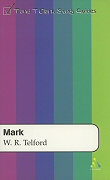
Mark
- Editor: W. R. Telford
- Publisher: T&T Clark
- Publication Date: 1997
- Pages: 155
Telford divides his study of Mark into three categories: history, literature, and theology. He discusses what Mark’s narrative of Jesus reveals about the early Christians, and how Mark blends history and theology together. The final chapter focuses on the general questions of the Gospel’s purpose and setting.
William R. Telford is senior lecturer in religious studies (Christian origins and the New Testament) at Durham University. He is the author of The New Testament: A Short Introduction and coauthor of Synoptic Gospels.
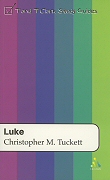
Luke
- Editor: Christopher M. Tuckett
- Publisher: T&T Clark
- Publication Date: 2000
- Pages: 118
In Luke, Tuckett discusses the authorship, date and text of the Gospel. With the main focus in this guide on Luke’s view of eschatology—salvation history—and the person and work of Jesus, Tuckett also tackles Luke’s positions on Jews, Gentiles and Judaism. Departing from Luke’s theology, the book concentrates on the concrete ideas set forth in the Gospel regarding the Christian life and practice. One major theme prominent in Luke concerns poverty and riches, and Tuckett spends a chapter on the subject.
Christopher Tuckett is professor in New Testament at the University of Oxford. His research interests are in the New Testament, Christology, Early Christian Gospels, and Paul. He is the author of Q and the History of Early Christianity.

John
- Editor: Barnabas Lindars
- Publisher: Sheffield Academic Press
- Publication Date: 1990
- Pages: 103
Lindars deals with the controversial issue of the Jews in John’s Gospel. He tackles the Gospel’s authorship and its agreement with the Synoptic Gospels. Lindars draws the reader into John’s world and the audience to whom John was writing. He also examines Jesus’ encounters with Pharisees, the Law, eternal life, the Gospel’s Prologue, John’s use of the title “Son of Man,” and the “I Am” sayings.
The late Barnabas Lindars was Rylands Professor of Biblical Criticism and Exegesis at the University of Manchester. He is the author of New Testament Theology: The Theology of the Letter to the Hebrews and the coauthor of Johannine Literature.
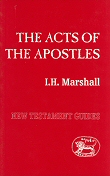
The Acts of the Apostles
- Editor: I. H. Marshall
- Publisher: Sheffield Academic Press
- Publication Date: 1990
- Pages: 119
This book is based on lectures Dr. Marshall delivered at Moore Theological College, Sydney, in 1991. In this volume he discusses the historical and literary structure of the book of Acts. He reveals Acts as a theological work that presents Jesus as the Messiah and focuses on early Christians as witnesses to that proclamation. Some detail is given to Paul’s conversion and subsequent missionary work.
I. Howard Marshall is emeritus professor of New Testament Exegesis and honorary research professor at the University of Aberdeen, Scotland, where he supervises postgraduate students in their theological studies. His major writings on the New Testament include commentaries on John’s epistles, the letters to the Thessalonians, and his work on Luke’s writings.
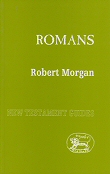
Romans
- Editor: Robert Morgan
- Publisher: Sheffield Academic Press
- Publication Date: 1995
- Pages: 157
Paul’s epistle to the Romans is often seen as a difficult text to understand. Some of that difficulty is the result of context and culture, so Morgan helps the modern reader understand what Paul intended his original audience to understand. The religious language of the epistle, its impact on first-century Christians in Rome, and its use of scripture and tradition are all clearly discussed here.
Robert Morgan is university lecturer in New Testament theology and a fellow of Linacre College, Oxford University, UK. His research interests are in New Testament history, theology, and hermeneutics. He is the author of The Nature of New Testament Theology.
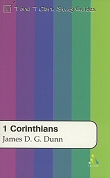
1 Corinthians
- Editor: James D. G. Dunn
- Publisher: T&T Clark
- Publication Date: 1995
- Pages: 113
After presenting some preliminary questions regarding authorship, date, purpose and unity of the Paul’s first letter to the Corinthian church, Dunn examines the problematic divisions that arose among the believers. He addresses the immense social tensions that erupted between the Church and society; and focuses on the problems arising regarding worship and belief.
James Dunn is emeritus professor of divinity at the University of Durham, and is a leading British New Testament scholar in the evangelical tradition. He received an MA and BD from the University of Glasgow, and a PhD and DD from the University of Cambridge. Dunn has written and edited numerous books and articles, including Christology in the Making, Jesus, Paul, and the Law and The Theology of Paul the Apostle.
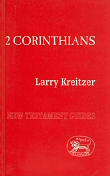
2 Corinthians
- Editor: Larry Kreitzer
- Publisher: Sheffield Academic Press
- Publication Date: 1996
- Pages: 141
Kreitzer explores the controversial place of 2 Corinthians has within Pauline studies. He gives special attention to the contribution that the epistle makes to our understanding of Paul’s views on such matters as his apostolic ministry, his interpretation of scripture, and his ecclesiology. After tackling some of the puzzling passages found in 2 Corinthians, Kreitzer addresses several ways in which 2 Corinthians challenges the modern reader.
Larry J. Kreitzer is tutor for graduates and tutor of New Testament at Regent’s Park College, Oxford. He also holds a research lectureship within the Faculty of Theology in Oxford. He is the author of several books, including The Letter to the Ephesians, Pauline Images in Fiction and Film and Gospel Images in Fiction and Film.
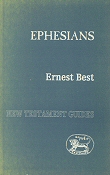
Ephesians
- Editor: Ernest Best
- Publisher: Sheffield Academic Press
- Publication Date: 1993
- Pages: 97
In the first section of this guide, Dr. Ernest Best examines in detail the normal questions of authorship and destination. He then offers a survey of the content of the letter, drawing out its main points while concentrating on the epistle’s theology. He offers a concise treatment of its teaching about the church and behavior, and how these two areas of life are reflected in the Christian community.
The late Ernest Best was professor emeritus at the University of Glasgow and the author of From Text to Sermon.
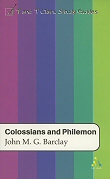
Colossians and Philemon
- Editor: John M.G. Barclay
- Publisher: T&T Clark
- Publication Date: 2001
- Pages: 129
Barclay brings to light the literary and historical connections between Colossians and Philemon. Paul’s theology and the early influence of Gnosticism, and he reexamines the Colossian hymn. Barclay also outlines Paul’s Christology in relation to the doctrine of creation, doctrine of God, doctrine of salvation, other-worldly powers, and the church. Regarding Philemon, Barclay concerns himself with the story behind the letter, its strategy and its outcome.
John Barclay is Lightfoot Professor of Divinity at the University of Durham, succeeding the position held by James D. G. Dunn. He teaches several topics in the New Testament and early Christianity at the undergraduate and master's level, and supervises a number of doctorates at the PhD level. He is the author of Jews in the Mediterranean Diaspora.
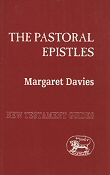
The Pastoral Epistles
- Editor: Margaret Davies
- Publisher: Sheffield Academic Press
- Publication Date: 1996
- Pages: 120
1 and 2 Timothy and Titus were once read as individual collections of traditional material—liturgical formulae, lists of virtues and vices, household codes, and codes for church order—but more recent studies have elucidated the coherence of each epistle. This volume exhorts readers through explicit and implicit, positive and negative examples, and through arguments that seek to ground ethics theologically and christologically. The author also highlights a question posed by contemporary scholars about the general philosophy of these epistles: do they seek to adapt a faith that opposes the wisdom of the world into one which conforms to the world’s wisdom about good citizenship? This guide provides a critical introduction to the insights of recent scholarship and to the epistles themselves.
Margaret Davies is senior lecturer in biblical studies at the University of Sheffield.
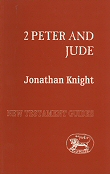
2 Peter and Jude
- Editor: Jonathan Knight
- Publisher: Sheffield Academic Press
- Publication Date: 1995
- Pages: 89
Dr. Jonathan Knight covers both of these letters because he believes there is a close association between them. He suggests that the author of 2 Peter, in fact, makes use of Jude to frame his response to the false teachers 2 Peter 3:1. Knight begins, therefore, with a detailed explanation of the content in Jude before embarking on 2 Peter. The guide concludes with a look at the influence of these two letters on early Christianity, especially with regard to eschatological hope. This is why 2 Peter confronts early Christian skepticism about the imminent return of Jesus.
Jonathan Knight is research fellow of the Katie Wheeler Trust. Previous appointments include lecturer and research fellow in biblical studies at Sheffield University, chaplain and research assistant to Stephen Sykes, and chaplain of Worcester College, Oxford. He is the author of Jesus: An Historical and Theological Investigation, Luke’s Gospel and The Ascension of Isaiah.
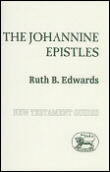
The Johannine Epistles
- Editor: Ruth B. Edwards
- Publisher: Sheffield Academic Press
- Publication Date: 2001
- Pages: 118
The three epistles of John occupy only five or six pages of an English Bible, yet they are among the most intriguing writings of the New Testament. Were they written by one person or more? In what sort of community did they originate, and what situation are they addressing? What is the background to their thought? How do they relate to the Gospel of John? What is their theological message, and does it have any relevance to the modern world? These are some of the issues considered in this insightful guide to the Johannine Epistles.
Ruth Edwards was formerly teacher of New Testament at King’s College, Aberdeen, Scotland.
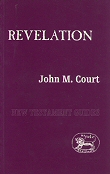
Revelation
- Editor: John M. Court
- Publisher: Sheffield Academic Press
- Publication Date: 1994
- Pages: 129
John Court introduces Revelation anew with a selection of thematic readings, entitled "Visions of God and Christ," "Visions of the Church in the World," "Visions of Creation and the End of the Universe," "Visions of Rival Powers," "Visions of the Future Hope. He pays special attention to the living traditions within which Revelation is interpreted. Court also devotes three substantial chapters to key literary, historical, and theological issues. How can one describe Revelation’s literary character? What historical and social context did Revelation come from? What are its abiding theological values and doctrines? This study is set in the context of modern approaches to the biblical text.
John M. Court is honorary senior research fellow, University of Kent, Canterbury, England. He is the author of Biblical Interpretation and coauthor of Religious Diversity in the Graeco-Roman World.
R. Norman Whybray was emeritus professor of Hebrew and Old Testament Studies at the University of Hull, and was a past president of the Society for Old Testament Study. His publications included Ecclesiastes and The Second Isaiah in this series, and The Good Life in the Old Testament (included in Old Testament Studies Series Collection).
Andrew T. Lincoln is Portland Professor of New Testament Studies at the University of Gloucestershire, and he previously taught in Massachusetts and Nottingham, and at Universities of Sheffield and Toronto. Professor Lincoln holds an MA and PhD from Trinity College, Cambridge and a BD from Westminster Theological Seminary, Philadelphia. His publications have included Paradise Now and Not Yet, Ephesians, and The Theology of the Later Pauline Letters, as well as a commentaries on Colossians, the gospel of St. John, and Hebrews.
Michael Knibb was Samuel Davidson Professor of Old Testament Studies, King’s College London, and a fellow of the British Academy. His published works include Translating the Bible: The Ethiopic Version of the Old Testament, Studies on the Testament of Job, The Qumran Community, and a commentary on First and Second Esdras, among others.
Reviews
5 ratings
Reuven Milles
3/14/2021

edson m nunes jr
2/16/2017

Unix
1/12/2016


Jason Clapper
5/5/2015


Alcides Bardela Filho
3/27/2014